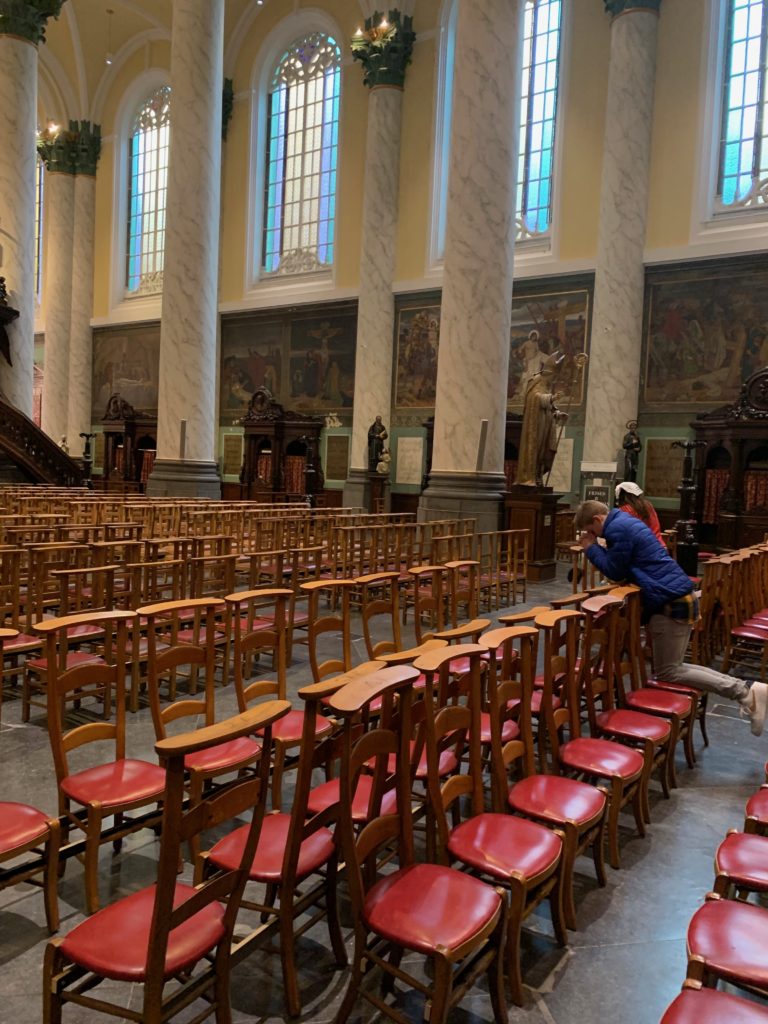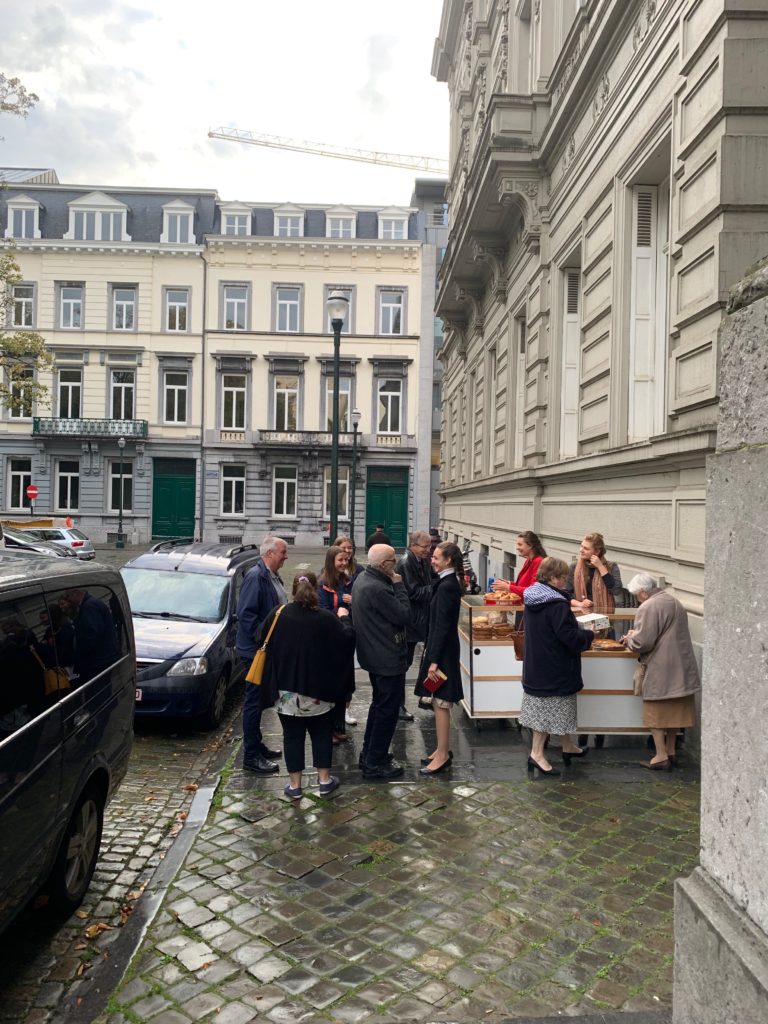I was not quite 5 years old when Pope John XXIII convened the Second Vatican Council and had just turned 6 when Sacrosanctum Concilium, the Constitution on the Sacred Liturgy, was promulgated by Pope Paul VI. I was not yet old enough to be an altar boy so my experience of the Roman Catholic Mass was limited to hearing mostly incomprehensible words from the celebrant and the assembly, punctuated by bells ringing from time to time. I know that I was not particularly attentive and had little interest in going every Sunday – a fact that I made clear to my parents through my behavior in the pew each week.
Fortunately, thanks to the work of Vatican II, things changed soon after that. Once the language of the Mass switched from Latin to English, I became a bit more interested. In fact, I eventually became an altar server, then, some years later, the head of the altar servers, then church organist and so on until I developed a deep love and respect for the Roman Catholic liturgy. This love and respect eventually led to my career as a church architect, where I could use my God-given gifts to help create appropriate environments for the post-Conciliar liturgy.
I never fully understood the significance of that shift until recently, when I had the opportunity to attend a pre-Conciliar liturgy while I was traveling outside the United States. While I had read in an online review that the Mass would be in Latin, I had no idea that it would be such a trip back in time. Built between 1842 and 1849 in the eclectic style, the church was designed to resemble one of Rome’s many basilicas with a flat apse choir. As I walked in one of the side front doors (the center ceremonial doors were not open), I looked down the 217-foot long side aisle upon a side altar whose ornate marble altarpiece reached almost the full 59′ vault height. I picked up one of the hymnals that included the text for the Latin Mass and headed toward the center aisle to find a seat. The first thing I noticed was that every other row of chairs was facing the opposite direction. I thought that perhaps they had turned some of the chairs for an organ recital or prayer groups so I continued up the long aisle to find the chairs arranged for Sunday Mass. As I neared the altar, I suddenly realized why the chairs were facing each other. The opposing chairs were to be used as kneelers!

I stepped into a row and tried out the kneeling chairs, only to find that they were too uncomfortable for me so I just sat down and waited for the Mass to start. As I sat there, I noticed a few things that I had not seen before.
First, the original high altar, with all its steps and marble and candles was clearly the altar to be used for the celebration of the Mass. It was separated (at quite some distance) by a communion rail that ran straight across the front. (The center section was later removed before I could get a photo of the full rail.) The communion rail was covered with white linen. The pulpit was halfway down the nave but there was a small lectern in the Sanctuary. As the various attendees shuffled in and took their seats, one young woman who blew her nose several times gave me a basis for measuring the reverberation time of this immense church – roughly 7 seconds.

As the Mass started, I heard the usual ring of the bell at the Sacristy door. But instead of everyone standing to start the liturgy, they all knelt on their chairs. The priest and a man who I thought was an acolyte, but later read the gospel, knelt down on the steps in front of the high altar. (As this was the Messe lue, there was no music.) The priest started speaking what I assumed was Latin. Between his unamplified voice, the fact that he was facing the altar and the long reverberation time, I could not understand a single word. I kept trying to follow along in the hymnal but it was not until we got to the Kyrie that I was able to understand a single word. At some point, the priest stood up near a microphone on the side of the altar, which made it much easier to hear him. (Of course, he was still facing the altar.)
The readings and homily were proclaimed in French from the small lectern and were easily understandable. I would say that the homily was somewhat contemporary in nature, focusing on the importance of faith and praising the missionaries who carry that message to non-believers.
The most surprising part of the entire service was the Eucharistic Prayer (or whatever it is called in the Latin Mass). After the Sanctus, I did not hear a word. It wasn’t just because the priest was back in front of the altar without a microphone. It was because he was just saying it to himself! Every word of it, including the consecration. I could see the host and the chalice going up and could hear the bells ringing but that was it. The central part of the Mass “proclaimed” in silence. Later, when the priest started the Pater Noster, I read along out loud, only to later realize that the congregation was only supposed to say the “Amen”.
Not surprisingly, communion was distributed at the rail, kneeling. I now saw the purpose of the white linen, which served as a sort of purificator to catch any crumbs of the Body of Christ, even though a paten was being used. Each communicant placed their hands under the linen while waiting to receive the host on the tongue.
At the conclusion of the Mass, as the priest left the Sanctuary, the congregation started to sing a Latin hymn. When the hymn was over, people quietly walked out, where they were greeted by the priest at the door to the street, where they could purchase fresh pastries from what appeared to be parishioners stationed on the sidewalk nearby.

Now I understand that such churches and such liturgies exist in the United States as well. I’ve just never felt any compulsion to check them out. And I probably wouldn’t have this time if it weren’t the only church in the neighborhood where I was staying. But after spending the last 25+ years designing worship spaces for “full and active participation” by the assembly, this just didn’t seem right to me. It’s not really about the language. I have a working knowledge of Latin from my high school studies, so I pretty much know what is being said at the Mass. It’s the disconnection between what the priest is doing and what the assembly is doing. It very much felt as if I was attending a performance where I occasionally got to participate in saying a few lines. There was absolutely no sense that “the priest celebrant and ministers together with the congregation form the liturgical assembly, which is the Church gathered for worship”, to quote Built of Living Stones. Not only did I not feel any connection to the priest, I felt no connection to the other worshipers. Perhaps that was due to the physical distance between us (there couldn’t have been more than 50 or 60 of us in this huge church). But, to me, it felt more like we were all just actors in a play, not a worshiping community. There are obviously many who feel differently than I do about such Masses. I’m just grateful that I have the ability to exercise my role in the liturgy in a full and active way, because that’s what works for me.
